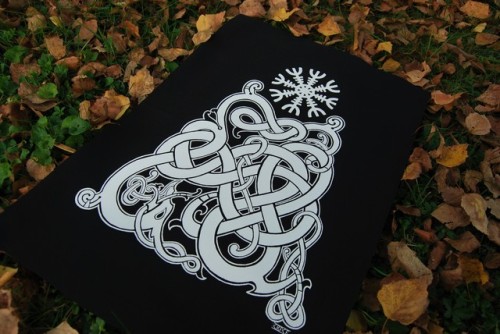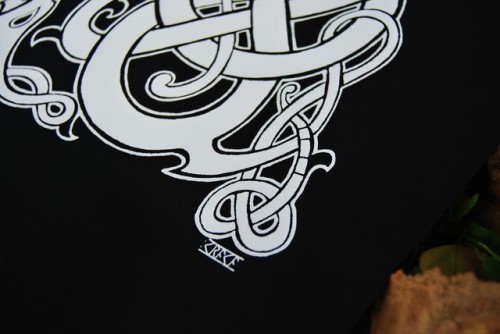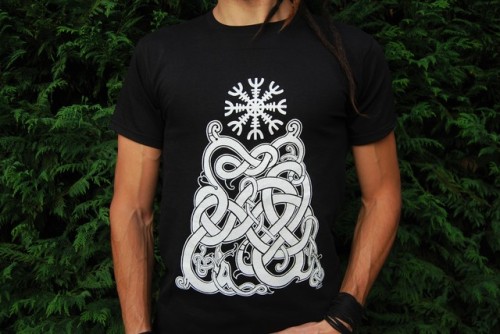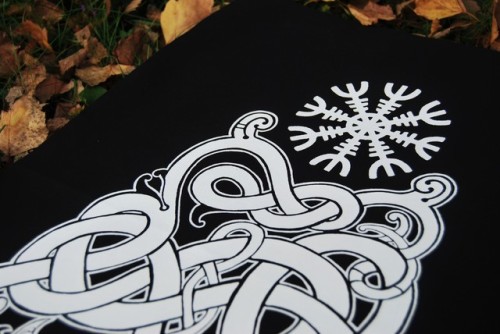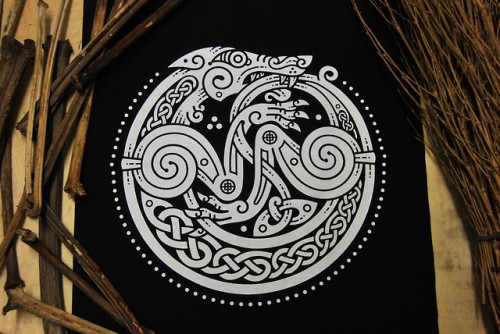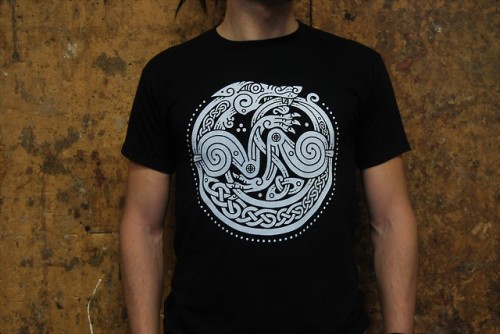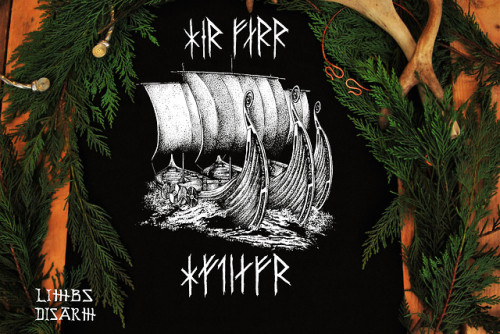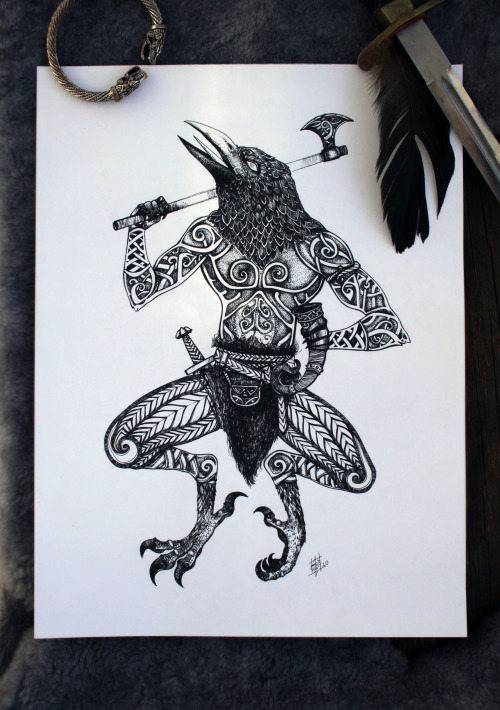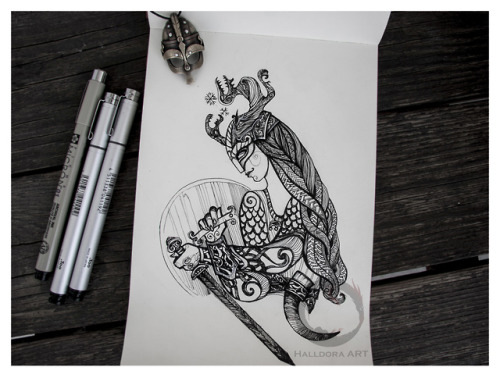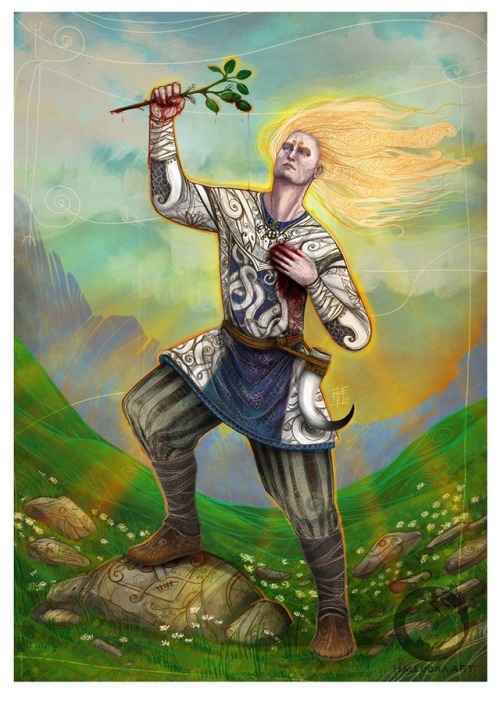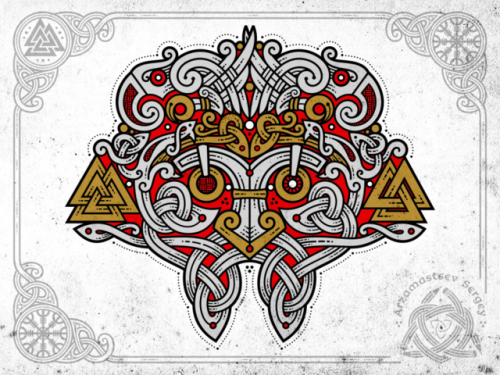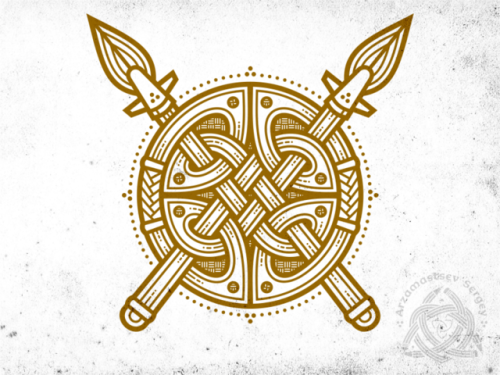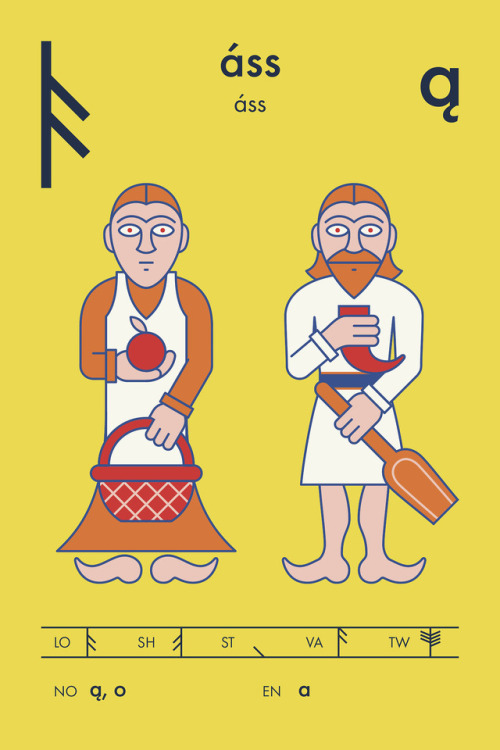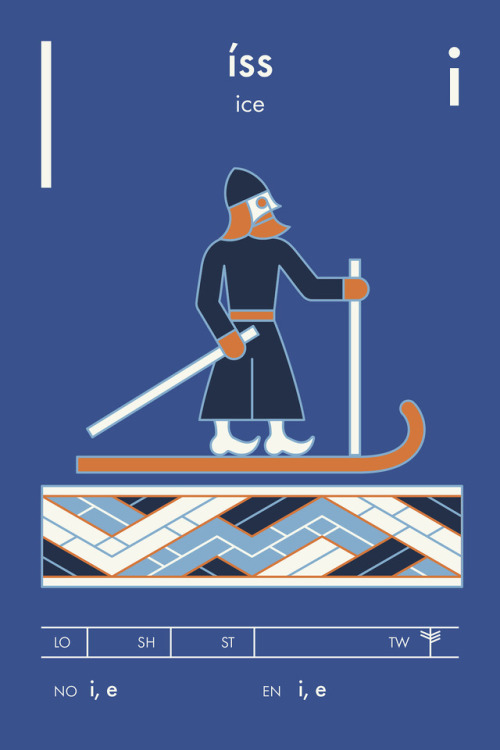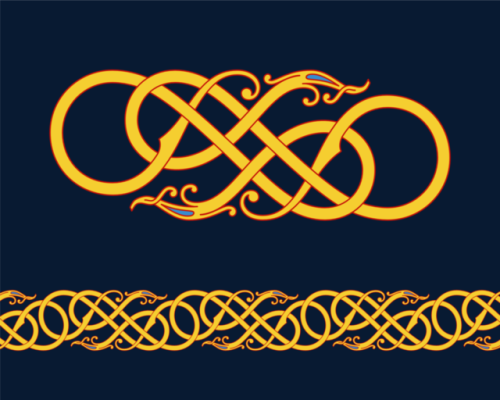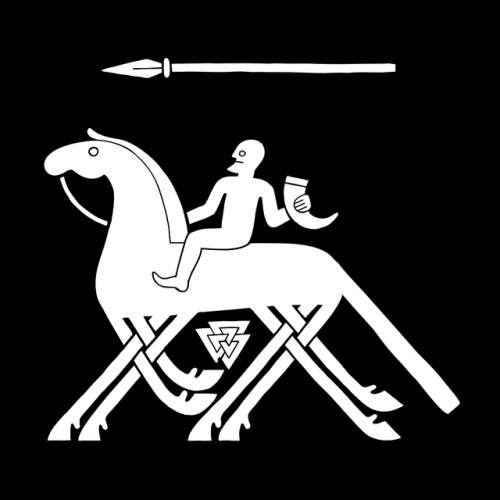#viking art
New print in our etsy shop!! Available asbackpatchandt-shirt!
“An Thríbhís Mhòr, the great triple spiral.”
The triple spiral motif is a Neolithic symbol common to many Indo-European cultures, examples of it are found from the megalithic temples of Malta in the South (4400–3600 BC) to the Northern megalithic tomb of Newgrange in County Meath, Ireland, built around 3200 BC.
The triskelion/triskele is one of the most distinctive motifs in Iron Age Celtic art as well, both as a symbol in itself and forming the geometric basis for more complex artistic compositions. It remained a core symbol in Celtic artistic compositions for over a millennium, recorded throughout the La Têne period across the continent, and a central element in later Insular Celtic art of the early Christian period. Significant also is the fact that the triskele composition is often composed of animals of various types, indicating that the symbol was linked to or emanated from the natural world.
Collaboration with the very talented artist from Siberia Sergey Arzamastsev, who very generously gave us the permission to print his amazing work. You can find more of his artworks at this link: https://www.instagram.com/celticartlogo/
**this print is grey on black, but it’s available in different colour combinations
Post link
New design available on etsyasbackpatchort-shirt!
“An ægishjálm I bore up before all folk… so that none dared come near me, and of no weapon was I afraid, nor had I ever seen so many men before me, and yet deemed myself stronger than them all; for all men were greatly afraid of me.“
This is the first design from a collaboration with the talented artist Sofia from Fiskr Art. Hand drawn on paper by the artist and digitally redrawn by us. You can learn more about her works at this link https://www.instagram.com/fiskrart
Post link

New print available in our shop! Hand-pulled screenprint with extremely long lasting eco-friendly inks, available in a variety of colours.
This print is a collaboration with the extremely talented @dyrs_hjarta_art and inspired by the Binding of Fenrir myth: you can see the huge wolf Fenrir right in the centre of the artwork, entangled by the smooth and supple fetter called Gleipnir, and gagged by a sword after he devoured the god Tyr’s hand. On the top the mask of the Allfather, Odin, and the six materials the dwarves required to forge the fetter from Svartalfheim: the sound a cat makes when it moves, the beard of a woman, the roots of a mountain, the sinew of a bear, the breath of a fish, and the spittle of a bird. You can see the gloomy faces of two of those dwarves on both sides of the print. On the bottom, the gods are fastening Gleipnir to the boulder Gjoll and the rock Thviti.
You can read more about it directly on https://limbsdisarm.etsy.com
The print is available on t-shirt, backpatch and tote bag. DM if you have any question!
This is one of our hand-pulled t-shirts available in our etsy shop. The design comes from a paper-and-ink drawing by our talented friend @fiskrart. Heat treated for long lasting print quality.
https://www.etsy.com/shop/limbsdisarm
We ship internationally!
“An ægishjálm I bore up before all folk… so that none dared come near me, and of no weapon was I afraid, nor had I ever seen so many men before me, and yet deemed myself stronger than them all; for all men were greatly afraid of me.”
.
.
Many thanks to Grace @tyrawen for the amazing photos, she’s a fantastic human being inside and outside.
Post link
https://www.etsy.com/shop/limbsdisarm
New print in collaboration with @celticartlogo, available as backpatch and t-shirt in a variety of colours. Follow us oninstagram for more updates!
We ship worldwide!
As one of the most puzzling and misinterpreted creature, the wolf has been at the very centre of cults and mythologies throughout history. In ancient times, Roman era, and Greek mythology, to the late Norse age and its depiction of the infamous Fenrir, the wolf has been a key figures in many cultures. Even if it’s not often associated with it, it played a pivotal role in Celtic culture as well. The wolf is not as present as other animals or zoomorphic representations in Celtic art, not like the boar, the eagle or the deer. Even so, there are mentions of the wolf in Celtic lore, particularly the very late one from the Middle-Age. Soon after Cormac mac Airt, the future High King of Ireland, was born, he was carried off and raised by a she-wolf for a period of time in the caves of Kesh, alongside her other cubs. In the tale of Táin Bó Cúailnge, the goddess Mórrígan appears under different shapes to the legendary hero Cú Chulainn, one of these being the shape of a wolf. Interestingly, the wolf plays a key role in the Celtic year cycle as well. It has always been associated with the first part of the year, usually the time around January, in different areas of Scotland and Ireland. Still today, in the Gaelic-speaking Highlands and islands, people refer to the first month of the year as “Faoilleach”, originally associated to a whole period in the Scottish agricultural calendar. The name has a close link to the wolf figure: in fact, “faol” or “faol-chú” means wolf in Gaelic, and it would appear to be a very old term, as wolves have been extinct in Scotland for centuries. In Scotland, the most notable representations of wolves are to be found in the Pictish culture, such as the one majestically engraved on the Ardross stone, 30 miles north of Inverness. This print is a modern reinterpretation of one of the most significant animals celebrated in hundreds of years of lore, legends and stone carvings.
Post link
New print!
Hér Ferr Hafdjarfr – Here sails the Sea-Brave.
Handpulled screenprint, available as t-shirt and backpatch: https://www.etsy.com/shop/limbsdisarm
Bryggen, Bergen, Norway – Some time during the early middle ages an unknown master runer carefully carved a Juniper stick with outstanding and meaningful designs. Still incredibly evocative of that past, the stick represents a complete Viking war fleet in all its power and glory, probably ready to sail, with dragonheads and pennants dominating the scene. On the reverse side of the stick is written Hér ferr Hafdjarfr, which literally means ‘Here sails the Sea-Brave’, either meaning an entire fleet or referring to the particular name (Hafdjarfr) of a local sea-bold.
Juniper itself was definitely not a random choice for the job. Part of the cypress family, it is one of the most widespread conifers and Vikings, being seamen and adventures who spread throughout Europe and beyond, would have found it everywhere. From warm and sunny Mediterranean places to the freezing landscapes of Norway, Greenland and Iceland, thus infusing a sense of longevity and immortality.
This print is the celebration of one of the most evocative archaeological findings in Scandinavian history and, in particular, of its Viking Age.
Longboats design by our friend @susannamascia, follow her to see more of her work!
More on my IG: https://www.instagram.com/limbsdisarm/
Post link
Silver-Inlaid Mammen Axe Head
Bjerringhoj, Mammen, Jutland, Denmark, 900s
The Vikings were prolific traders, creating a global network that spanned the Caspian Sea to the North Atlantic, the Arctic Circle to the Mediterranean. It was this exposure to other cultures that played a key role in shaping the Viking identity, from the religious beliefs they held to the development of their practical skills. The extent of their travel is revealed in a series of recent finds, such as The Vale of York Hoard, which was discovered in 2007 by metal detectorists near Harrogate and contains coins and silver from places as far removed as Afghanistan, Ireland, Russia and Uzbekistan. (x)
Post link
In Norse mythology, a dís (“lady”, plural dísir) is a deity, ghost, or spirit associated with Fate who can be either benevolent or antagonistic toward mortals. Dísir may act as protective spirits of Norse clans. It is possible that their original function was that of fertility goddesses who were the object of both private and official worship called dísablót, and their veneration may derive from the worship of the spirits of the dead.The dísir, like the valkyries, norns, and vættir.
Post link
⌘ Balder ⌘
—————————–
Balder, Old Norse Baldr, in Norse mythology, the son of the chief god Odin and his wife Frigg. Beautiful and just, he was the favourite of the gods. Most legends about him concern his death. Icelandic stories tell how the gods amused themselves by throwing objects at him, knowing that he was immune from harm. The blind god Höd, deceived by the evil Loki, killed Balder by hurling mistletoe, the only thing that could hurt him. After Balder’s funeral, the giantess Thökk, probably Loki in disguise, refused to weep the tears that would release Balder from death.
———————————–
Post link


Hrafna-Flóki
The Anatomy Of Viking Art
This phenomenal series by artist Jonas Lau Markussen explores the styles of Viking Age art. His recent series depicting the Younger Futhark is a sight to behold. Follow him for more.
Web - Jonas Lau Markussen
Tumblr - @jonaslaumarkussen
Post link





